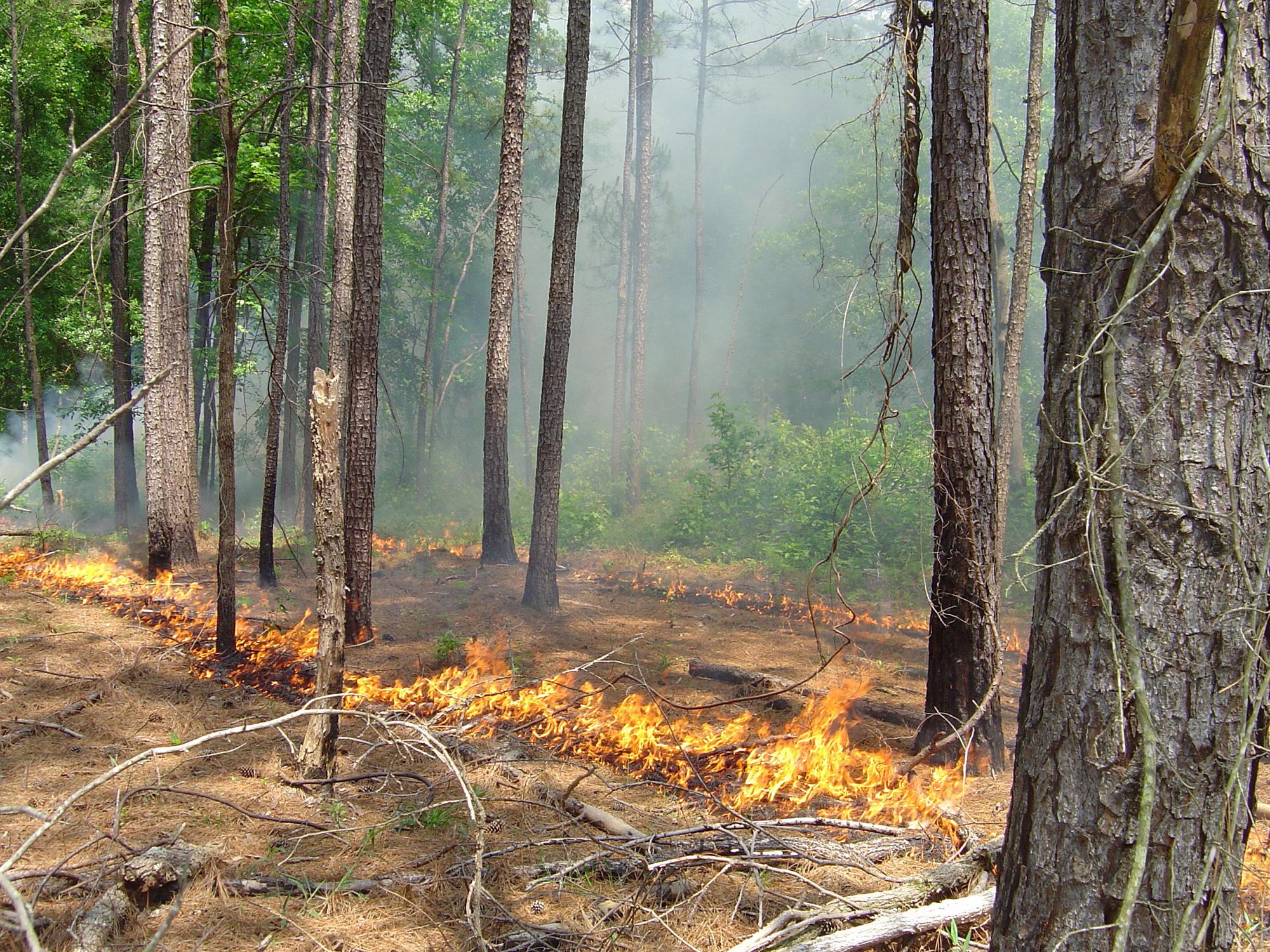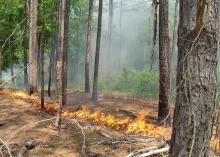Information Possibly Outdated
The information presented on this page was originally released on March 2, 2018. It may not be outdated, but please search our site for more current information. If you plan to quote or reference this information in a publication, please check with the Extension specialist or author before proceeding.
Keeping fuel loads low reduces wildfires
STARKVILLE, Miss. -- March is a good time for landowners to take steps to prevent wildfires, not only because it is Wildfire Prevention Month, but also because more fires occur this month.
Heather Alexander, an assistant professor in the Mississippi State University Forest and Wildlife Research Center, said March sees more wildfires than summer months because it is a time of transition between winter and spring.
"At this time of year, winds are high and fuels are dry," she said.
The Mississippi Forestry Commission suppressed 2,318 wildfires in 2017. Those fires burned 33,574 acres and threatened 4,474 structures, 4,441 of which were saved. About 90 percent of those fires were started by people.
John Kushla, professor and forestry specialist with the MSU Extension Service, said keeping fuel loads low reduces a wildfire’s chance of spreading. Fuel loads are the flammable materials fire could consume.
“Maintaining firebreaks around timber and providing and maintaining good access roads to and through their property for wildland fire equipment are just a few basic ways landowners can prevent destruction from wildfire,” Kushla said. “There are timber insurance policies now available, and landowners should consider purchasing such insurance if their timber is nearing harvest age.”
The most important step timberland managers can take is scheduling regular, prescribed burns. These controlled fires greatly reduce fuel loads in forests and benefit wildlife.
“Prescribed burns help manage unwanted vegetation, improve access into the stand and enhance wildlife habitat,” Kushla said. “Wildlife species will respond differently to the frequency and intensity of prescribed burning.
“Very frequent fires one or two years apart will favor small game birds, such as bobwhite quail, whereas moderately frequent fires two to four years apart favor Eastern wild turkey,” he added. “White-tailed deer are more habitat generalists and favor most any regular prescribed burning program.”
When using prescribed fire for a wildlife habitat objective, conduct understory burning only during the winter. Many wildlife species breed in the spring, and a prescribed burn at this time could be counterproductive to wildlife populations.
An additional use for prescribed burning is for landowners who sell pine straw.
“It is important to have clean straw, free of sticks and cones,” Kushla said. “For successful pine straw operations, vegetation control with herbicides in the fall, followed by a prescribed burn in the winter, will allow a cleaner pine straw harvest the following year.”
Scheduled fires also reduce unwanted vegetation.
“In upland oak forests, fires are used to limit the spread of species like winged elm and red maple,” Alexander said. “This opens up space and increases light, which, in turn, helps oaks grow better. These fires also remove leaf litter from the ground, preparing a better seedbed for acorns. Removing fire-sensitive species is important for wildlife that need more open growing conditions.”
People have no control over some elements that contribute to wildfires, such as dry, windy days. However, more often than not, human error and neglect are factors.
“Obtaining a burn permit from the Mississippi Forestry Commission prior to timber or agricultural burning can help prevent mistakes. Landowners should check for burn bans before outdoor burning, including campfires and trash burns,” Alexander said. “Sparks can also originate from chainsaws, cigarettes, hot equipment parts and dragging vehicle chains.”
Campers also have a part to play. Keep campfires small and clear of nearby vegetation that could catch fire. Burn only natural materials and not rubber or plastic.
“If possible, create a firebreak of gravel or bare dirt around the fire,” Alexander said. “Never leave a campfire unattended, and make sure the fire is completely extinguished before leaving.”
Building with fire-retardant designs and materials, keeping roofs and gutters clean of fallen leaves and pine needles, and maintaining watered and mowed lawns are just a few basic ways people who live near forestland can protect their homes from being damaged by wildfires.
“Plant low vegetation with succulent leaves, such as shrubs, and use mulches that are less fire prone, such as stone,” Kushla said. “Mark your street number on the curb in reflective paint so emergency responders can find your home in the dark.”
The Mississippi Forestry Commission offers a Firewise educational program to help homeowners and community leaders understand how to protect homes and communities from wildfires. This program offers tips on design, construction and landscaping techniques. For more information, visit http://mfc.ms.gov/forest-protection/firewise.






